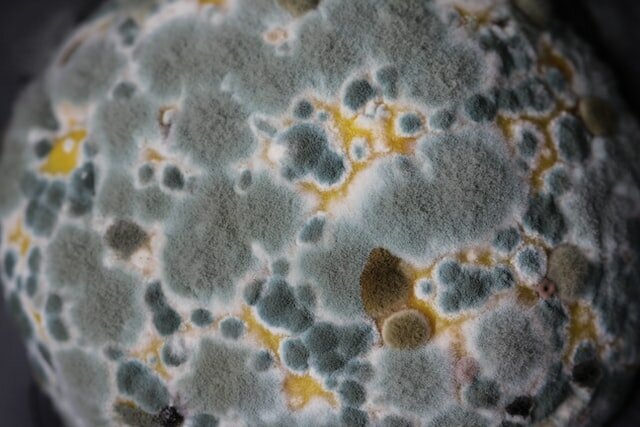Moulds can cause allergies everywhere.
Do you have sneezing fits or runny nose without a recognisable trigger? Do coughing fits bother your everyday life? Then mould could be the reason.
Few people would think of having a mould allergy. But contrary to what many people think, mould does not only occur in damp, poorly ventilated flats, but almost everywhere – outdoors as well as in most indoor rooms.
The perfidious thing about it: In the case of a mould allergy, the immune system reacts allergically to the invisible spores or fragments of mould. These spread their allergens unnoticed everywhere. The result can be very unpleasant allergy symptoms.
Mould allergens enter the body both through the air we breathe and through food. You can hardly avoid this. You come into contact with mould almost everywhere – outdoors as well as indoors. Especially in the summer and autumn months, higher concentrations of mould spores occur in nature.
Overview of typical mould allergy symptoms
A mould allergy is mainly noticeable by:
- Runny nose
- sneezing fits
- cough
In more severe cases, hives and allergic asthma may also occur. The symptoms can occur all year round.
Mould exposure – Where is mould particularly common?
High humidity as well as relatively warm temperatures in the range between 20 and 25 degrees Celsius promote mould contamination indoors. In addition to damp walls, poorly maintained humidifiers and filter mats in air conditioning and ventilation systems can also contribute to this.
High mould contamination of outdoor air is often caused by fungus-contaminated grain. This is one reason why farmers and gardeners are affected by mould allergies more often than average.
Moulds are also found in potting soil of potted plants, in rubbish bins and old mattresses.
Practical tips for a mould allergy:
- Leave potted plants outside. There is almost always mould in potting soil.
- Empty your household rubbish frequently and regularly.
- Throw mouldy food in the rubbish. It is not enough to remove mouldy areas.
- Do not use a compost heap
- You should air your house regularly: Ideally once or twice a day
- Close the bathroom door when bathing or showering. This keeps the moisture in the wet room and prevents it from spreading throughout the house. Then open your bathroom window.
- Dry your laundry outside the home
- Use dehumidifiers and air filters. You can quickly improve the indoor climate.

